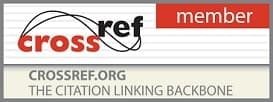Vol. 2, Issue 3, Part B (2018)
Rationality and outcome of activity related treatment approach in the management of non-specific low back pain in young adults
Author(s):
Dr. Vijay Vasant Nemade and Dr. Atul A Patil
Abstract:
Background: The occurrence of Non-specific low back pain is very common. 15% to 30% of the Young adults develop this condition. Some Orthopaedic surgeons commonly prescribe bed rest for Non-specific low back pain along with short term medication. On the other hand some Orthopaedic surgeons prescribe physical therapy and some prefer ordinary activity along with short term medication. Controversy persists over the most effective modality of treatment because of lack of evidence that any one of these modality of treatment is always effective. Aim of this study is to find out the most effective treatment approach for patients with Non-specific low back pain. Methods: The study is a retrospective, comparative, parallel group study, with three intervention groups. The study was done at our Institute during April 2016- July 2017. Patients of age between 21 to 45 Years presented with low back pain of less than 3 weeks duration with no history of trauma and no positive clinical findings were included in the study. Patients with neurologic signs, spondylolisthesis, and history of trauma, fever, weight loss, patients who received corticosteroid therapy, patients who had previous back surgery, pregnant females with low back pain and patients with other systemic disorder were excluded from the study. Patients who received bed rest for 3 days along with short term medication were labelled as Group A. Patients who received physical therapy with short term medication were labelled as Group B and Patients who received treatment according to the activity/work demands of the patient were labelled as Group C. Data on outcomes were collected during follow-up in outpatient department or on telephone. Outcomes of all patients were assessed at 1 month, 2 months and 3 months after completion of treatment. The assessment of outcome was focused on the effect of each modality of treatment on pain relief as measured on Visual Analogue Scale (VAS Score), the level of function and number of sick days. Results: We included 216 adult patients diagnosed as Non-specific low back pain fulfilling the inclusion criteria. Group A consisted of 69 patients who were treated with bed rest for 3 days and short term medication. Group B consisted of 73 patients who were treated with physical therapy and short term medication. Group C consisted of 74 patients who received treatment according to their activity/work demand. As compared with the patients in Group A and B, the Group C patients recovered signiï¬cantly better in terms of VAS Score for pain, level of Function, the number of sick days. The median number of sick days was Seven in Group A and B Patients as against Five in Group C Patients. A statistical analysis was carried out using the SPSS software package. Conclusion: Our study results demonstrates that heavy manual labourers, sportsmen and military/police recruits with Non-specific low back pain respond better and earlier to 3 days of bed rest and short term medication as compared to physical therapy and short term medication. On the other hand office workers and those with light work responded better and earlier to physical therapy and short term medication. Hence Activity related treatment approach seems Rationale and leads to early functional recovery and less number of sick days.
Pages: 113-116 | 1974 Views 350 Downloads
How to cite this article:
Dr. Vijay Vasant Nemade and Dr. Atul A Patil. Rationality and outcome of activity related treatment approach in the management of non-specific low back pain in young adults. Nat. J. Clin. Orthop. 2018;2(3):113-116. DOI: https://doi.org/10.33545/orthor.2018.v2.i3b.65







